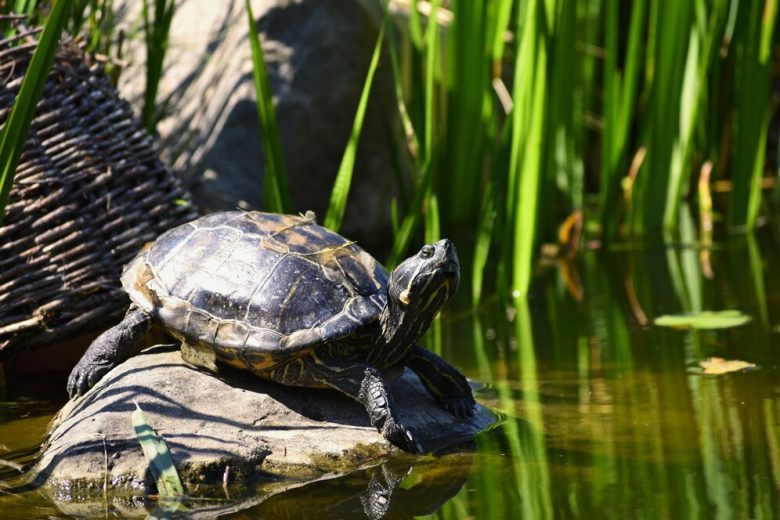Have you ever dreamed of waking up in the heart of nature, surrounded by the sounds of birds, the smell of reeds, and wild scenery, and seeing a roe deer just a few steps from your terrace? At Lebada Luxury Resort & SPA, this dream becomes reality.
The roe deer – Capreolus capreolus is one of the most graceful and delicate appearances in the fauna of the Danube Delta.
This article will provide you with captivating information about this elegant mammal and show you why a stay in the Danube Delta with breakfast included can mean more than relaxation – it can become a true adventure in nature.
Description of the Roe Deer – Wild Elegance in the Danube Delta
The European roe deer (Capreolus capreolus) is a herbivorous mammal from the Cervidae family, known for its slender body, graceful movements, and changing coat: reddish-brown in summer and greyish in winter.
- Size: 60–75 cm in shoulder height
- Weight: between 20 and 30 kg for females, up to 35 kg for males
- Lifespan: up to 10–12 years in the wild
- Running speed: up to 60 km/h

Did you know…?
- Roe deer can jump up to 2 meters high and over 6 meters in length in a single leap.
- They are extremely silent and can pass through entire forests without making noise, being almost invisible unless you’re really looking for them.
- Despite their shy nature, roe deer are often seen early in the morning or at sunset, even near our resort.
Reproduction – A Fascinating Cycle in the Roe Deer’s World
Roe deer have a unique reproduction cycle among European mammals. Mating occurs in summer (July–August), but the embryo remains dormant until December, a phenomenon known as embryonic diapause. The effective gestation lasts about 5 months, with births taking place in May–June.
- Number of fawns: 1–3 (usually 2)
- Fawns are left hidden in vegetation, and the mother returns periodically to nurse them
- The fawns’ coat is mottled with white spots for camouflage
Diet – A Dedicated Vegetarian
Roe deer feed exclusively on vegetation, preferring:
- shrub leaves
- buds
- tender grasses
- fallen fruits
- willow or poplar shoots
In the Danube Delta, they find plenty of food, in an ideal habitat composed of floodplain forests, reed beds, and marshy meadows.
Habitat – A Discreet Resident of the Delta
Although it’s not the first animal that comes to mind when you think of the “Danube Delta,” the roe deer has adapted remarkably well to this complex ecosystem. Preferred areas include:
- floodplain forests (e.g., Letea and Caraorman)
- marshy islands
- meadows and canal edges
The Delta offers sleeping options in the Delta not only for tourists but also for these elegant creatures.
Curiosities About Roe Deer
- They don’t make loud sounds, but during the mating season, males emit a specific bark, similar to that of a dog.
- Males (bucks) mark their territory by rubbing their antlers against trees.
- Each year, the buck sheds and regenerates its antlers, a key process in maintaining social hierarchy.

Where Can You See Roe Deer in the Danube Delta?
At Lebada Luxury Resort & SPA
On one of the quiet side paths of the resort, near a wild zone with limited access, there’s a small corner of paradise where roe deer come to drink or find shelter.
We captured these magical moments and also shared them on TikTok – the clip featuring our deer has gathered thousands of views in just a few days!
So if you choose accommodation in the heart of the Danube Delta at Lebada Luxury Resort & SPA, there’s a good chance you’ll wake up in their company.
@lebada.luxury.resort Meet then at Lebada Luxury Resort & SPA 🦌 #traveltoromania #madeinromania #hotelsandresorts #hotelromania #tiktoktravel #hotelhideaway
Frequently Asked Questions About Roe Deer in the Danube Delta
- Are roe deer dangerous?
No. They are shy, peaceful, and avoid human contact. Observing them from a distance is the best approach. - When is the best time to spot them?
At dawn or dusk, when it’s quiet and the temperatures are milder. - Can they be fed?
We don’t recommend it. It’s important for wildlife to remain wild. We admire them, but don’t interfere with their natural behavior. - Is the Danube Delta a common habitat for roe deer?
Yes, especially in less-traveled areas. The plant diversity and absence of large predators make the Delta a safe haven for them.
A Meeting That Stays With You
The roe deer is a symbol of grace and natural fragility, and the Danube Delta hosts it in a way that leaves you speechless.
If you want more than just a vacation – if you’re looking for an authentic experience, with living nature, magical sunrises, and unforgettable wildlife moments – choose Lebada Luxury Resort & SPA.
Here, the sleeping options in the Delta are not only comfortable but also perfectly integrated into a spectacular natural setting.
Do you want to see roe deer in their natural habitat?
📍 We’re waiting for you at Lebada Luxury Resort & SPA – a place where nature comes alive.



